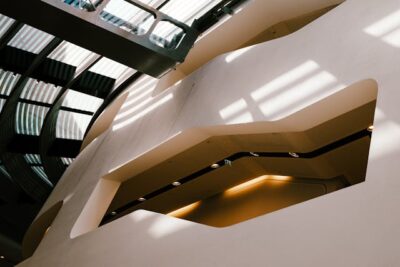Back in the 15th Century, the Renaissance ushered in an era of reinvention for architecture. The focus shifted to making beautiful buildings that were also robust and could stand the test of time.
Today, many architects continue to devote energies to passion projects, aiming to build a world where beauty and functionality coexist. Helping them in this endeavor are new-age building materials with standout characteristics.
A 2025 Deloitte report highlights that improving economic conditions are expected to positively influence construction demand across various segments. More professionals now use building information modeling to make informed material choices, opting for innovative solutions that support resilient structures.
So, how exactly do contemporary building materials let architects be more creative while also fulfilling the changing demands of their client base?
High Tensile Strength Materials for Freer Structures
Tensile strength remains a highly sought-after characteristic of building materials, especially in high-impact construction projects. Materials with high tensile strength can handle environmental compression without relying on heavy beams and supports.
PTFE (Polytetrafluoroethylene) and ETFE (Ethylene Tetrafluoroethylene) have emerged as excellent choices for lightweight architecture, with many architects picking them for projects that need wear resistance. ETFE, in particular, is ideal for outdoor applications such as architectural membranes.
According to Dunn Lightweight, high-quality tensile fabric solutions allow architects to push the limits of design and engineering. They can visualize and bring any shape to reality, from intricate geometrical forms to curves. Thus, these options facilitate a bold statement without material-based limitations.
Inherent Sustainability for Long-Term Compliance
Compliance issues plague many construction projects, even when the team meticulously examines the regulations. Adhering to current norms and lowering the risk of future issues limits the creative liberty of passionate architects.
A 2025 study in Smart and Sustainable Built Environment observed that buildings can face three types of compliance risks: structural, aesthetic, and thermal. Many of these concerns stem from depending on poor-quality materials and inadequate knowledge sharing. It follows that using sustainable materials that mitigate environmental and structural risks can reduce the probability of future problems.
For example, ETFE leads to lower CO2 emissions compared to older building materials. It is primarily because the material resists degradation by sunlight and harsh weather. Thus, the maintenance and upkeep are significantly lower than traditional options, such as wood.
Moreover, it is also 100% recyclable. It means one can repurpose these materials at the end of their useful life. It is a substantial win for a sector commonly associated with global warming.
Using such sustainable options for building insulates you from the risk of compliance issues emerging in the future, such as exceeding the maximum carbon footprint. It ensures your creative labor will not get culled in a few years.
More Avenues for Customer Delight
Think of materials like meshes and tensile membranes. They employ natural light so excellently that the residents of the corresponding building may witness a marked decrease in their use of artificial light solutions.
Likewise, consider PTFE. It can filter out UV light to a great extent, keeping the indoor environment cool. A study published in Materials Today Communications confirms that PTFE shows ultraviolet radiation resistance in addition to self-cleaning and thermal stability. Effectively, you will use air conditioning less and enjoy a less extreme electricity bill.
New-age building materials have opened up these fresh avenues for customer delight. They not only enhance the aesthetic appeal of a site but also address customer concerns like rising living costs and claustrophobia from living in overly confined spaces.
One especially striking development is the possibility of “living” buildings made from ELMs, or engineered living materials. These projects will potentially utilize fungal mycelia and bacteria to make buildings that can self-heal and adapt to the changing environment. Just imagine: your home could fix its cracks; your blocks could absorb carbon dioxide.
It may take several years yet for the world to witness living buildings in reality. However, we cannot overlook the increasing need for creative architectural solutions. In these troubled times, the housing crisis is peaking in sync with climate change.
For instance, CNBC reports that more Americans are now considering living next to the mall. New apartment buildings are coming up, connecting homes to malls via green spaces. They offer people a more connected and vibrant living space that offers light and life. Infusing these projects with additional features for cutting HVAC costs can be functional creativity at its best.
Exciting Times Ahead
The architecture world is undoubtedly experiencing an exciting phase, with ample scope for new designs and perspectives. From parametric design that incorporates computing using specific parameters to finding new uses for waste, professionals are transforming the landscape in brilliant ways.
New building materials empower architects with the freedom to conduct experiments, allowing them to transform creative ideas into realities. Further scientific research on sustainable and robust building choices can support architects in furthering their creative visions without restriction.












